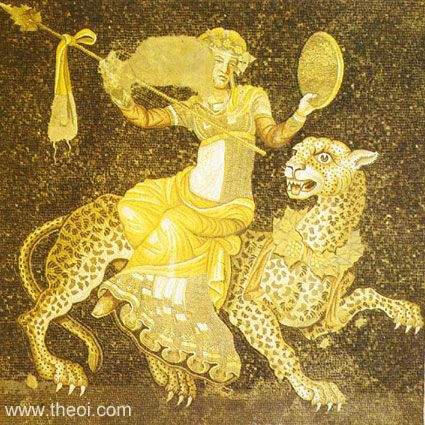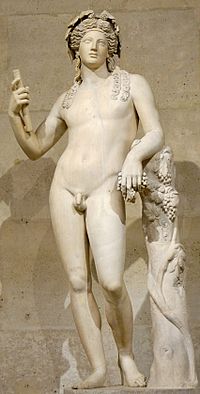So many of you have asked for more about Dionysius after last week’s post. [Crickets chirping] Nonetheless, this week, I collected some of my favorite images from around the web.
Here’s a 2nd century ACE Roman statue of Dionysius, or Bacchus, copied from an earlier Hellenistic model. I saw this one years ago at the Louvre.
There are two common versions of the god. Like the statue here, he is sometimes depicted as a handsome, beardless young man, a derivation of the earlier, popular Greek kouros, an idol of the masculine ideal, which also seems to have been the prototype for statues of Apollo.

A Roman bust, from Tyre, provides more facial detail for Dionysius, and the depiction of a horn on his head. Dionysius was associated with animals, and mythological hybrid creatures like the satyr.

I had the opportunity to see this piece at the museum of Delos, an ancient archaeological site. It was originally a mosaic from the atrium pool of a wealthy home that has been named the House of Dionysius. The story here is Dionysius riding back from the East, his reputed birthplace, on a panther. He’s seen with his common symbols – a thrysos (a pine-cone tipped staff) and a wreath of ivy. He certainly looks androgynous here, in fact – could he be cross-dressing?
 This is a glass cameo from the 1st century ACE, at the Petit Palais in Paris. Dionysius (Bacchus) is the little child, and the description says the older man in the picture is a satyr, giving Dionysius grapes.
This is a glass cameo from the 1st century ACE, at the Petit Palais in Paris. Dionysius (Bacchus) is the little child, and the description says the older man in the picture is a satyr, giving Dionysius grapes.
Here’s Caravaggio’s painting of Bacchus, where he looks especially flamboyant, yet cherubic at the same time. It’s from the 16th century.

A painted vase by an ancient Greek artist known as Kleophrades shows an older, bearded Dionysius with a panther pelt as a cape and a cup of wine.


